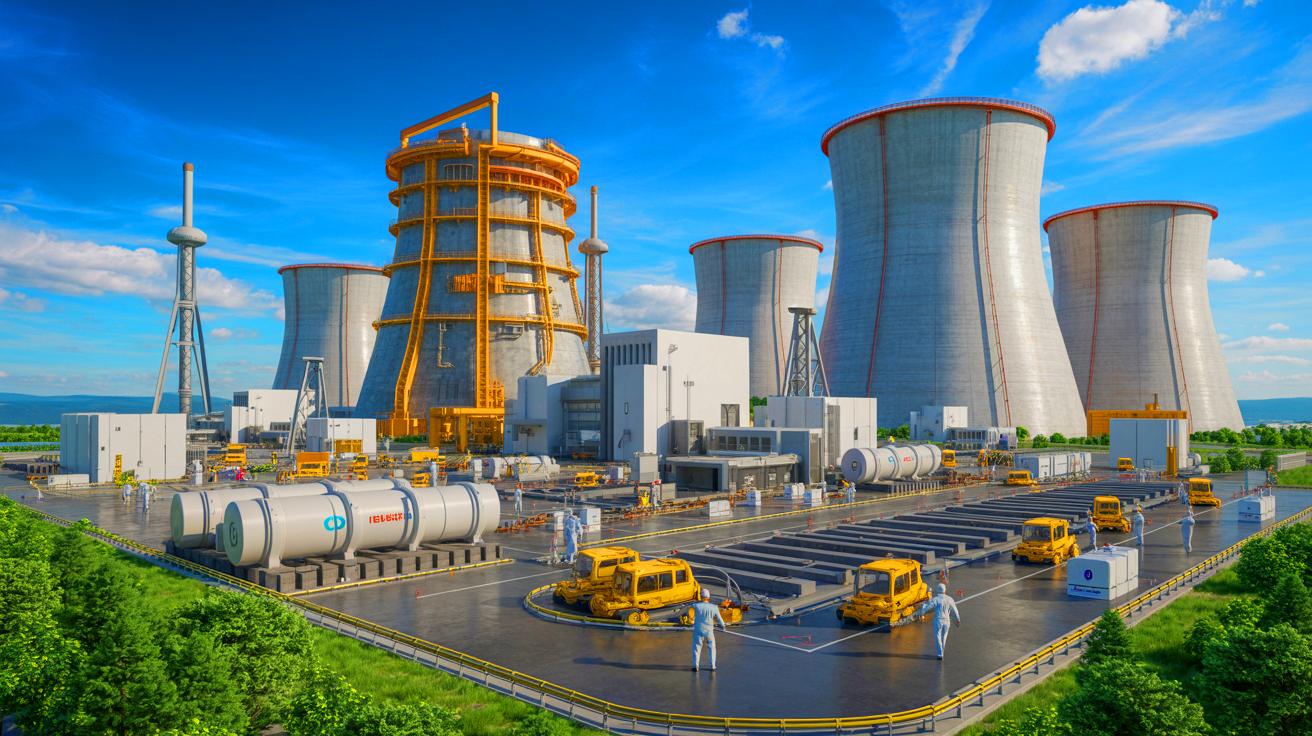IN A NUTSHELL
🔋 The U.S. is investing in advanced nuclear reactors and innovative fuel production to enhance energy independence.
🌍 The DOE’s initiative aims to reduce reliance on foreign enriched uranium sources and bolster domestic infrastructure.
🚀 Fast-tracking next-gen reactor testing is a key component, with a goal to achieve nuclear criticality by July 4, 2026.
🔧 Collaboration with private firms and research institutions is crucial for unlocking the full potential of nuclear technology in the U.S.
The United States is embarking on a transformative journey to revolutionize its energy landscape by investing in advanced nuclear reactors and innovative fuels. This ambitious endeavor aims to not only enhance domestic energy security but also bolster the country’s position as a global leader in nuclear technology. With the U.S. Department of Energy (DOE) spearheading initiatives to expand domestic nuclear fuel production, the nation is poised to overcome its reliance on foreign sources of enriched uranium. As the demand for clean, reliable, and sustainable energy grows, America’s commitment to next-generation nuclear technology holds the promise of a brighter and more energy-secure future.
DOE’s Initiative to Boost Domestic Fuel Production
The U.S. Department of Energy (DOE) has taken a significant step towards securing the nation’s energy future by launching a pilot program aimed at increasing the domestic production of advanced nuclear fuel. This initiative, which invites qualified U.S. companies to propose, construct, and operate new fuel production facilities, is part of a broader strategy to reduce reliance on foreign sources of enriched uranium. By fostering private sector investment and innovation, the DOE aims to pave the way for a true nuclear renaissance in America.
One of the key motivations behind this initiative is the current lack of sufficient domestic infrastructure to meet the projected demand for nuclear fuel, especially for next-generation reactor technologies. Importing a significant portion of enriched uranium exposes the nation’s energy supply chain to potential disruptions and geopolitical factors. Energy Secretary Chris Wright emphasized the importance of secure domestic supply chains in achieving a nuclear energy renaissance, highlighting America’s resources and expertise in nuclear development.
Expediting Next-Gen Reactor Testing
In tandem with the fuel production initiative, the DOE is leveraging its authority to fast-track the testing of next-gen nuclear reactors. This effort, launched in June 2025, aims to accelerate the testing and deployment of advanced reactor designs. The program’s goal is to achieve nuclear criticality in the new reactors by July 4, 2026, setting an ambitious timeline for progress.
The DOE plans to select at least three reactor designs later this summer, which will benefit directly from the newly established fuel infrastructure and authorization pathways. Applicants for the program will bear the costs associated with constructing, operating, and decommissioning advanced nuclear fuel lines, as well as procuring nuclear material feedstock. Proposals will be evaluated based on technological readiness, the soundness of fuel fabrication plans, and overall financial viability.
Expanding Domestic Nuclear Fuel Production
Expanding domestic nuclear fuel production is a critical component of the U.S. energy strategy, as nuclear power provides a reliable and emissions-free energy source to meet decarbonization goals. Without a secure and scalable supply of advanced nuclear fuel, the deployment of next-generation reactors cannot proceed at the necessary scale to meet future energy and national security needs.
Innovative developments in nuclear fuel are already underway. Scientists at the Idaho National Laboratory (INL) recently tested a new nuclear fuel composed of thorium and high-assay low-enriched uranium. This fuel aims to reduce nuclear waste, enhance reactor safety, and lower operational costs. Additionally, private firms like TerraPower, backed by Bill Gates, are working on producing high-assay low-enriched uranium (HALEU) to support the development of next-generation nuclear power plants in the U.S.
The Path Forward: Challenges and Opportunities
While the DOE’s initiatives mark a significant step forward, the path to achieving a nuclear energy renaissance is not without challenges. Developing the necessary infrastructure, securing investment, and ensuring regulatory compliance are all critical hurdles that must be addressed. However, the opportunities presented by advanced nuclear technology are vast and promising.
By investing in domestic fuel production and next-gen reactor technology, the U.S. can strengthen its energy independence, reduce carbon emissions, and drive economic growth. The collaboration between government, industry, and research institutions will be key to unlocking the full potential of nuclear energy. As the nation moves forward, the question remains: How will the U.S. navigate this complex landscape to achieve a sustainable and secure energy future?
This article is based on verified sources and supported by editorial technologies.
Did you like it? 4.5/5 (21)
